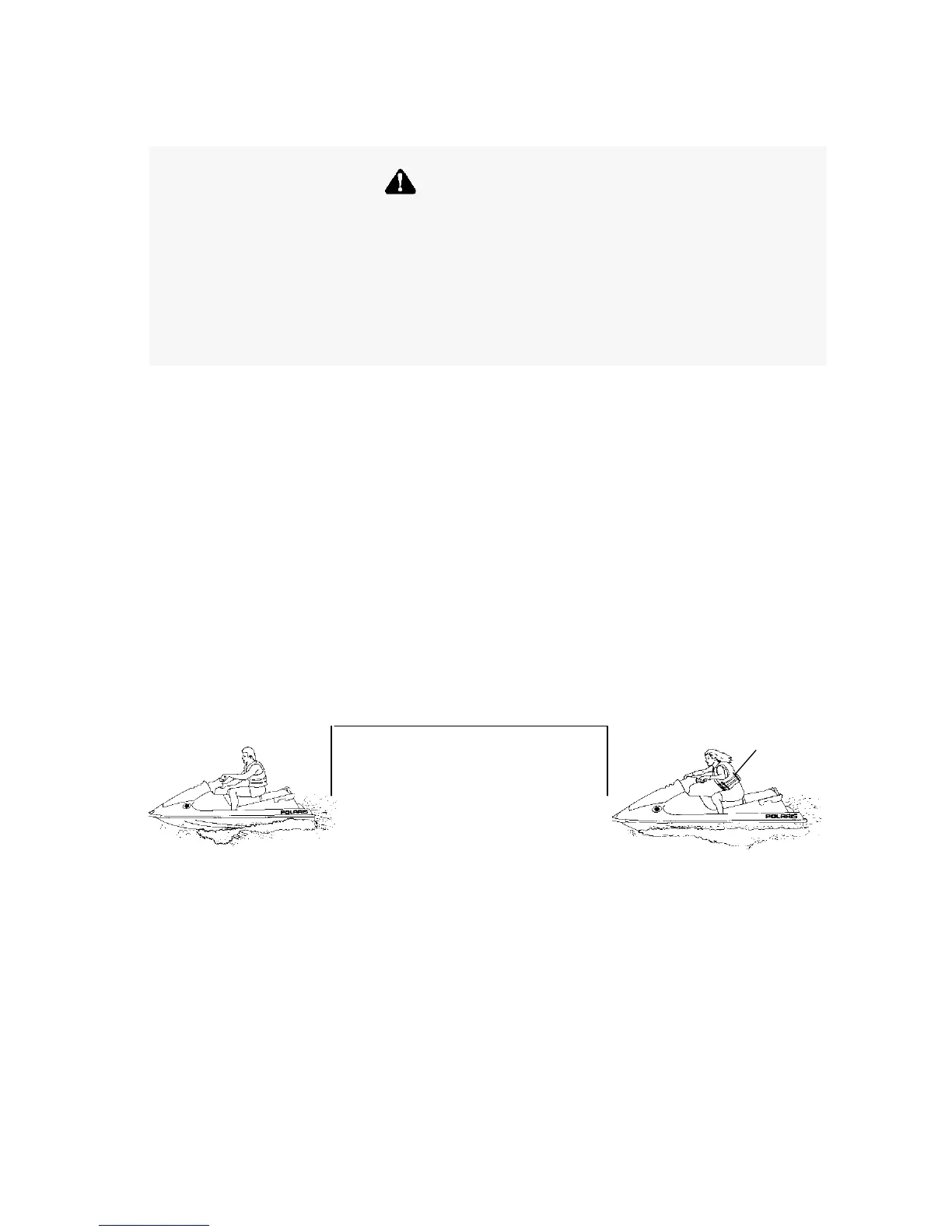67
OPERATION
Stopping the Watercraft
The operator of the watercraft should practice stopping to become
familiar with the procedure. Stopping is affected by gross weight
(watercraft and rider), vehicle speed, wind direction, and water surface
conditions.
The watercraft is not equipped with a brake system. When t he throttle
is released, the natural drag of the water slows and stops the watercraft.
Always keep a safe distance from other vessels, swimmers, objects in
the water and t he shoreline. Allow yourself plenty of room for
stopping. When operating at full speed (1), it could take the watercraft
as much as 300 feet (90 m) to come to a stop after t he throttle is
released. This distance is approximate and is supplied only for
reference.
After releasing the throttle, coast toward the desired stopping area with
the engine idling. You may need to use the throttle again for steering
control.
NOTE: Push the engine stop button before entering shallow water to
prevent sand and debris from entering the pump and cooling s ystem.
Colliding with an object in the water can result in serious injury to
the operator or passengers. All riders must keep feet, arms and
hands inside the watercraft at all times, and especially while
approaching a dock, vessel or other object. Do not turn off the
engine while approaching an object. Engine power is required for
steering.
WARNING
300
